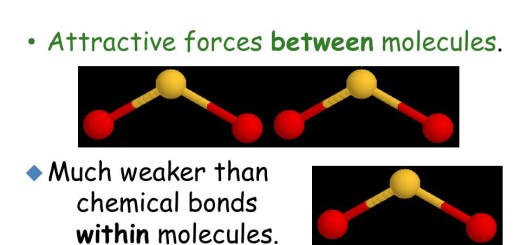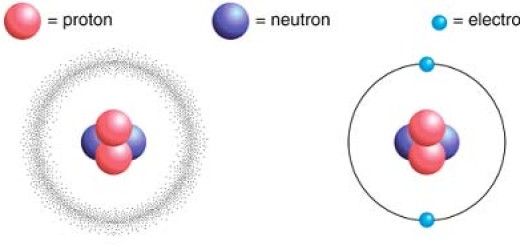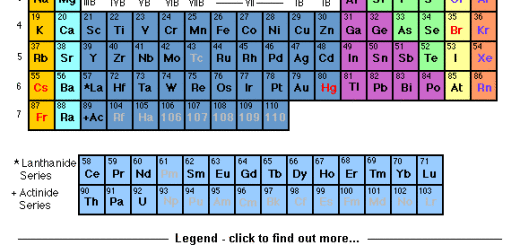Physical & Chemical properties of Matter (Density, Melting point, Boiling point, Hardness, Electric & thermal conduction)
Matter is anything that has a mass & occupies a space, Mass is the amount of matter that the body contains, The measuring unit of mass is gm or kg, Volume is the space that is occupied by the body, The measuring unit of volume is cm³, m³ or L, Everything around us on the Earth’s surface is called “Matter“, Any matter has a mass & a volume.
Physical properties of matter
Matter can be distinguished from each by physical properties and chemical properties, Physical properties of matter are density, melting point, boiling point, hardness, Electrical conduction, Thermal conduction, colour, taste and smell.
The colour, taste and smell
It is a property that can sometimes be used to differentiate between different materials, You should not taste or smell any substance in the lab, without asking your teacher first because some substances may harm you.
We can differentiate between iron, silver & gold by colour, We can differentiate between sugar, table salt & flour by taste, We can differentiate between vinegar & perfume by smell, Some substances have no colour, no taste & no smell such as water and oxygen gas, but they differ from each other in other properties.
Density
Density is the mass of unit volume of a substance or it is mass of one cubic centimetre of a substance, The measuring unit of density is gm/cm³, When the density of water is 1 gm/cm³, this means that the mass of 1 cm³ of water equals 1 gm, The mass of 1 cm³ of cork is smaller than the mass of 1 cm³ of wood, the mass of 1 cm³ of wood is smaller than of 1 cm³ of iron, this is due to the difference in density.
The density of a matter is a fixed value, whatever the used volumes or masses differ, the density of a cube of copper, whose volume 2 cm³ is the same density of another cube of copper, whose volume is 10 cm³, When decreasing the volume of a body to half according to its density, the density remains constant.
Each substance has its own density, There aren’t two substances that have the same density, therefore, equal volumes of different substances have different masses, Equal masses of different substances have different volumes, due to the difference in density.
Density = Mass / Volume
When a solid body is submerged in a known volume of water, the amount of increase in the volume of water is equal to the volume of the solid body.
The volume of a solid body = Volume of water & solid body − Volume of water
The relation between floating or sinking of matter in water & density: Materials which have a higher density than water sink in it such as an iron nail & a metallic coin, materials which have a lower density than water float on its surface such as wood, cork, ice & drops of oil.
Life applications of density
Water is not used to put out (extinguish) petrol fires because the density of petrol is less than that of water, so, petrol floats on the water surface and water doesn’t put out the petrol fires.
Balloons filled with hydrogen or helium rise up in the air carrying flags during festivals because the densities of hydrogen & helium are less than the density of air, The change in the density of matter is used to check the purity of matter such as the determination of the quality of milk.
Melting point
Matter exists in three states which are solid, liquid and gaseous, The change of matter from solid-state to liquid state by heating is known as melting, The temperature at which the matter begins to melt is called melting point.
Melting point is the temperature at which matter begins to change from a solid-state to a liquid state, When the melting point of ice = 0° C, this means that ice begins to change into water at 0° C, Each substance has a definite melting point which is used to differentiate between different substances.
Each substance has a definite melting point, The melting point of ice is less than of wax, Substances can be classified according to melting points into Substances have low melting points such as wax, butter and ice, Substances have high melting points such as iron, copper, aluminium and table salt.
Life applications of melting points
Cooking pans (pots) are made up of aluminium or stainless steel alloy which doesn’t rust due to its high melting point, Workmen melt the solid metals to be easy for mixing and shaping to form alloys such as Copper-gold alloy that is used in making jewels, Nickel-chrome alloy that is used in making heating coils.
Boiling point
The change of matter from a liquid state to gaseous state by heating is known as Boiling, The temperature at which the matter begins to boil is called Boiling point, Boiling point is the temperature at which matter begins to change from a liquid state to a gaseous state.
When the boiling point of water = 100°C, this means that water begins to change into water vapour at 100°C, Each substance has a definite boiling point which is used to differentiate between different substances.
Life applications of boiling point
The separation of the components of crude petroleum oil by heating the crude oil, then separating each substance at its boiling point due to the difference between them in their boiling point, Boiling point is the temperature at which the vapour pressure of the substance is equal to the atmospheric pressure, so, when pressure increases, the boiling point increases, Pressure pans are used for fast cooking as they raise the pressure so, boiling point increases and food is cooked faster.
Hardness
Solid substances are divided according to hardness into:
- Solid substances are soft at room ordinary temperature such as rubber.
- Solid substances become soft by heating to be shaped easily such as metals.
- Solid substances can’t be soften by heating such as coal & sulphur.
Life applications of hardness
The screwdrivers are made up of steel iron because it is very hard, The rods used in building concrete houses are made up of iron, not copper because the hardness of iron is more than that of copper.
Electric conduction
Substances can be classified according to electric conduction into Good conductors of electricity and bad conductors of electricity.
Good conductors of electricity are substances that allow electricity to flow through, Examples: Metals such as iron, silver, copper, aluminum, Some solutions such as acidic solutions, alkaline solutions and some salt solutions.
Bad conductors of electricity are substances that don’t allow electricity to flow through, Examples: Gases, Some solid substances such as sulphaur, phosphorus, wood and plastic, Some solutions such as the solution of hydrogen chloride in benzene & sugary solution.
Life applications of electric conduction
Electric wires (or cables) are made up of copper or aluminium and covered with a plastic layer because both of copper and aluminium are good conductors of electricity, while plastic is a bad conductor of electricity.
Electric screwdrivers are made up of steel iron, while their handles are made of wood or plastic because steel iron is a good conductor of electricity, but wood and plastic are bad conductors of electricity.
Thermal conduction
Substances can be classified according to thermal conduction into Good conductors of heat and bad conductors of heat.
Good conductors of heat are substances that allow heat to flow through, Examples: Metals such as iron, copper & aluminium.
Bad conductors of heat are substances that don’t allow heat to flow through, Examples: Non-metals such as wood and plastic.
Life applications of thermal conduction
Cooking pans are made of aluminium because aluminium is a good conductor of heat and it has a high melting point, Handles of cooking pans are made up of wood or plastic because wood and plastic are bad conductors of heat.
Chemical properties
Metals can be classified according to their chemical activity into three groups Very active metals, Less active metals & Inactive metals.
Very active metals are metals which react with oxygen when they are exposed to humid air, so they lose their metallic luster, such as sodium and potassium, Sodium & potassium are kept under kerosene surface to prevent their reaction with the atmospheric oxygen.
Less active metals are metals which react with oxygen if they are left in air for some days forming a layer of rust such as iron, aluminium & copper, Steel bridges & the holders of light bulbs are painted from time to time to protect them from rust & corrosion, Aluminium cooking pans are washed with a rough material to remove the rust layer formed on their surfaces, Metallic spare parts of cars are covered with grease to protect them from rust & corrosion.
Inactive metals are metals which find great difficulty in reacting with oxygen, Examples: Silver, platinium, nickel, gold & chromium, Silver, gold & platinum are used in making jewels because they are chemically poor active, so, they keep their luster for a long time, Nickel, gold & silver are used to cover other substances which rapidly gain rust such as iron to protect them from rust & corrosion.
Matter, Properties & Kinds of molecules, Melting process & Vaporization process
Atomic structure of matter, Energy levels, Electronic distribution & chemical activity













